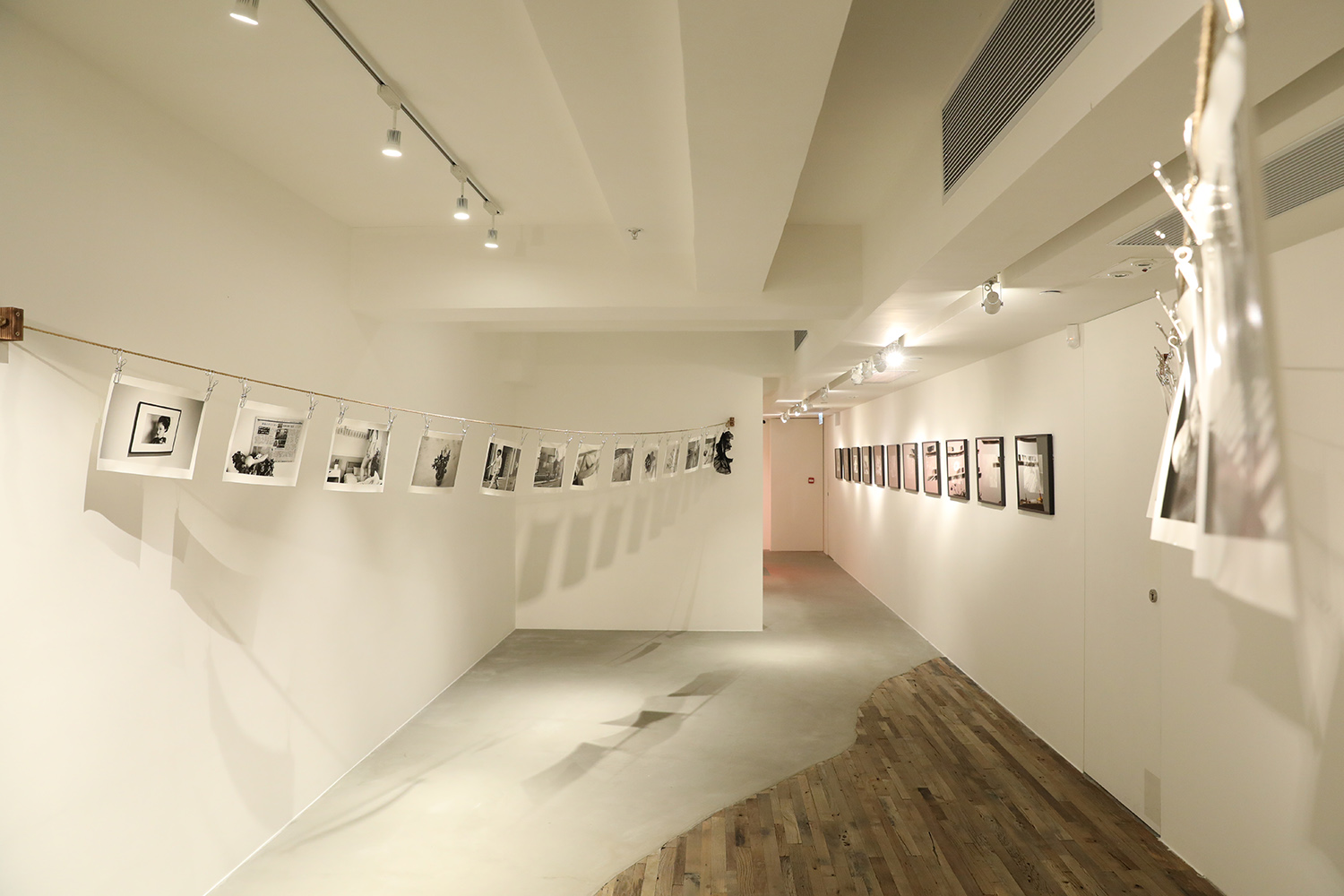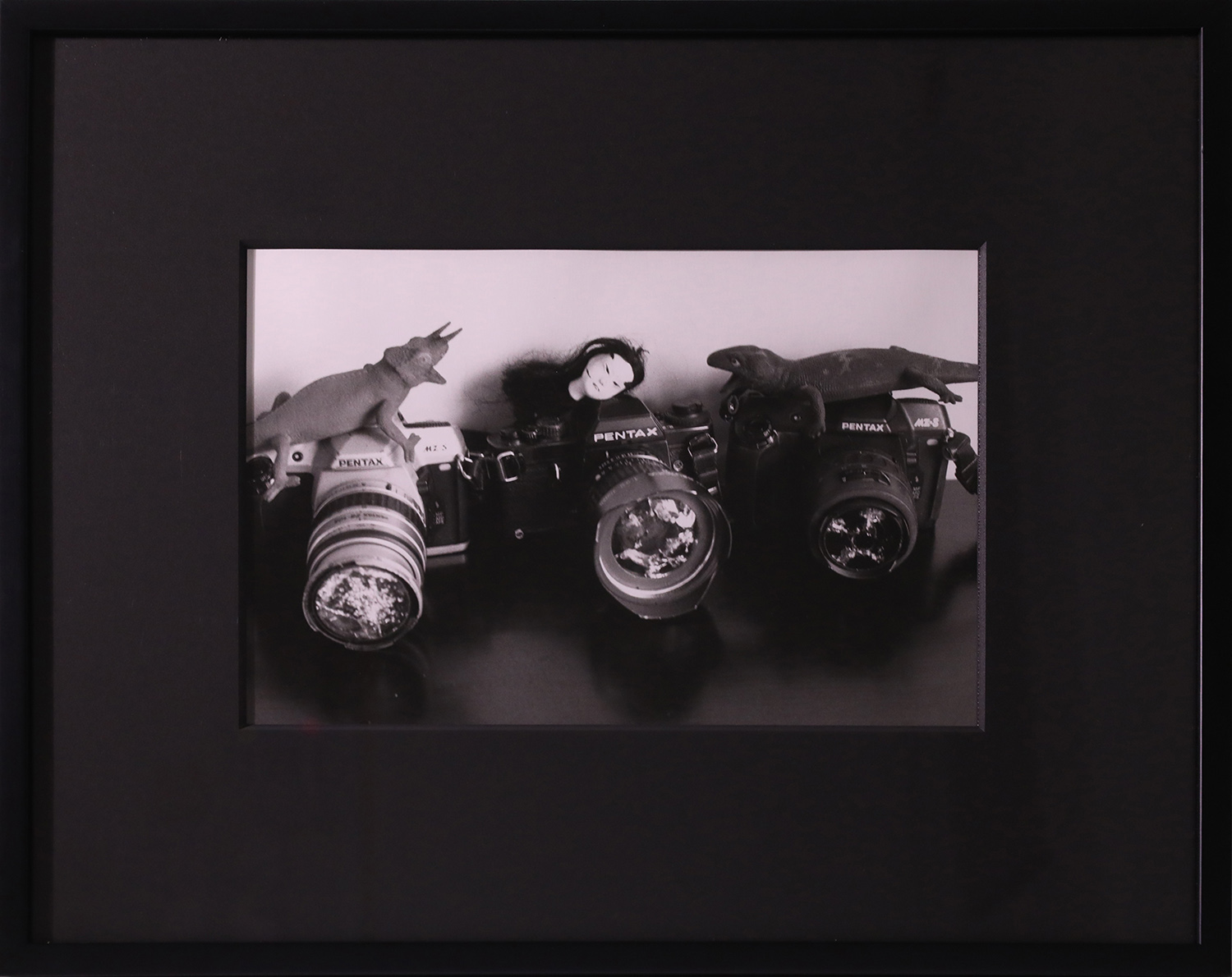Shows
The Solo Exhibition of Nobuyoshi Araki


Nobuyoshi Araki turned 77 in May, and is closing in on half a century as a household name. The ubiquitous Japanese erotic photographer has spent the majority of his life as an icon, with his tenure as an art world superstar longer than many of his fans have been alive. This has become Araki’s artistic feat: after more than 400 photo books, he continues to spin momentum out of an artistic formula that has changed very little since its inception.
If his latest solo exhibition at Hong Kong gallery Over The Influence was any indication, the now-elderly artist shows no sign of backing away from his lifelong fixation on naked women, photographing them in the same way over and over again: lustful, yielding, tied up with jutting breasts. He too poses in his images. Now nearly bald but for impish tufts of hair, Araki jabs objects at his models’ genitals, puts paint on their bodies or reclines with a cup of tea, his round sunglasses framing a look of perpetual nonchalance.


Araki’s pictures have long been called misogynistic and exploitative by both audiences in Japan and abroad. Yet interrogating the images can be frustrating. The artist provides little information about the women being photographed—the only explanation we are given is that these are scenes from Araki’s “personal life”—we can only assume everything is consensual. Defenders often insist critics misunderstand Japanese culture and tradition, or photography itself. At any rate, criticisms never seem to lessen Araki’s popularity; they are simply coopted into his persona. He is invariably described as “controversial,” “notorious,” “infamous,” and his oeuvre remains profitable.
In 2010, feminist art critic Hiroko Hagiwara (1955–2015) wrote an essay arguing Araki had become a “self-promoting discourse” in which “the viewer is not given freedom to interpret the work but strictly conditioned by the system.” Hagiwara targeted the photographer’s self-styled brand suggesting freedom and sexual openness, which she argued was a superficial disguise for rigid gender segregation, prescribing a narrow set of ideas about sexual pleasure to an audience of millions through “well-organized, market-oriented corporate efforts supported by a network of publishers.” She also ridiculed the idea of Araki’s photography as being “personal”: “[He] may have published more than any other living photographer in the world. How can we see these publicly and widely distributed photographs as personal? And if they are really personal, why is it necessary to repeatedly view this man’s ‘private’ life?”

The show did not engage with critiques of Araki’s sexual politics, but strongly emphasized his realism. The exhibition space was set up to evoke the feeling of an artist’s studio: Araki’s photographs were printed on plain photo paper and strung up casually on clotheslines, dangling next to black women’s underwear. A small table displayed some of Araki’s other props—dinosaur figurines, dolls—next to scattered Polaroids. The show primarily featured the photographer’s “Last by Leica” series (2012– ), and the curatorial statement spends more than half of its length describing Araki’s cameras and film. It was meant to feel casual and genuine. Instead, it felt like artificial cult worship.
This idea should be familiar to anyone who spends time on Instagram in 2017: viewers do not demand images for art’s sake, but rather consume the spectacle of an idealized “authentic” life. Araki was onto this early in his career, and it made him radical: as an intellectual pioneer of postwar Japanese photography, he proposed a new form, “I-Novel,” that imagined photography as an autobiographical ritual, an ongoing self-portrait of obsession and desire. At the time, it was an exciting response to dominant Western modernist representational modes. Today, it feels quaint, to say nothing about its tired depictions of women.
“Last by Leica” suggests Araki’s work no longer points the way forward in photography, but aims backward. His commodity has become nostalgia for a photography that no longer exists—not unlike Leica, which was once a tool for serious photojournalists, but is now jewelry for affluent hobbyists. In a time when the Internet is saturated with sex, and when smartphone photographers publish visual stories every day, it is unclear why we are expected to still be compelled by Araki’s stream of consciousness, which for nearly 50 years has continued to imagine women in a fixed place. As a hulk within the art photography industry, he will remain successful for years to come. As an artist, Araki has ceased to be interesting.

“The Solo Exhibition of Nobuyoshi Araki” is on view at Over The Influence, Hong Kong, until June 30, 2017.







